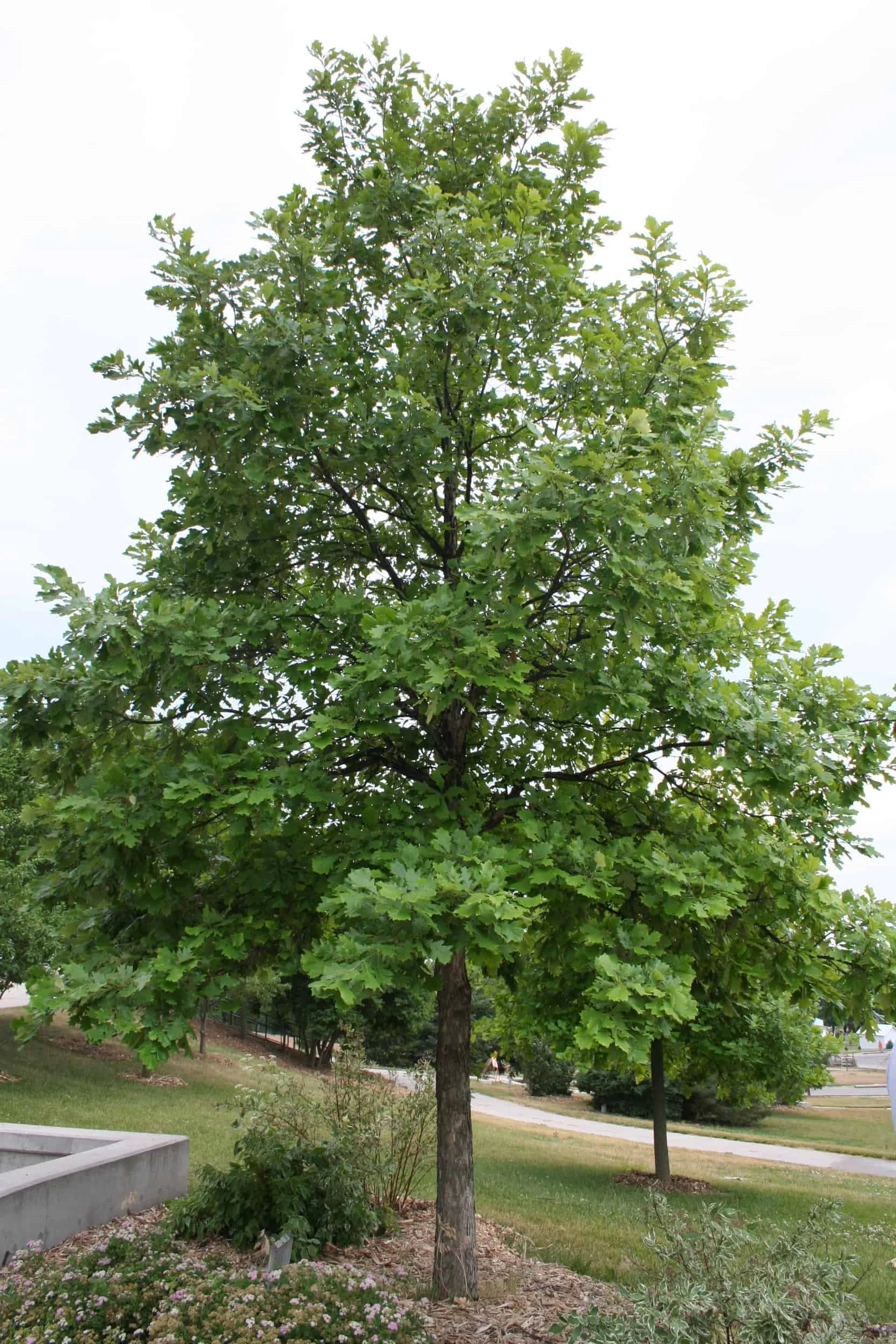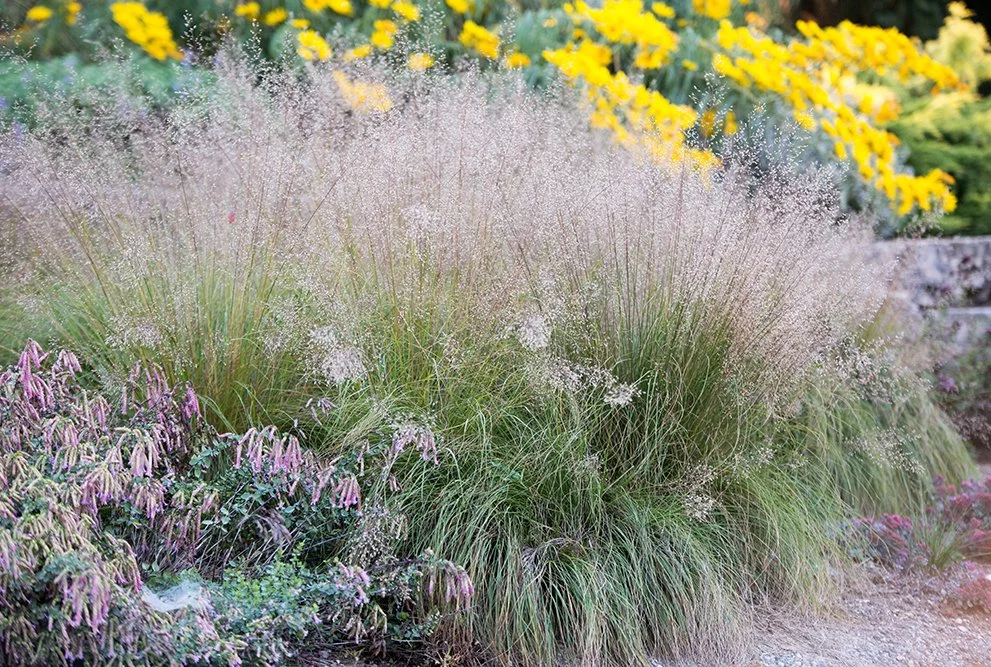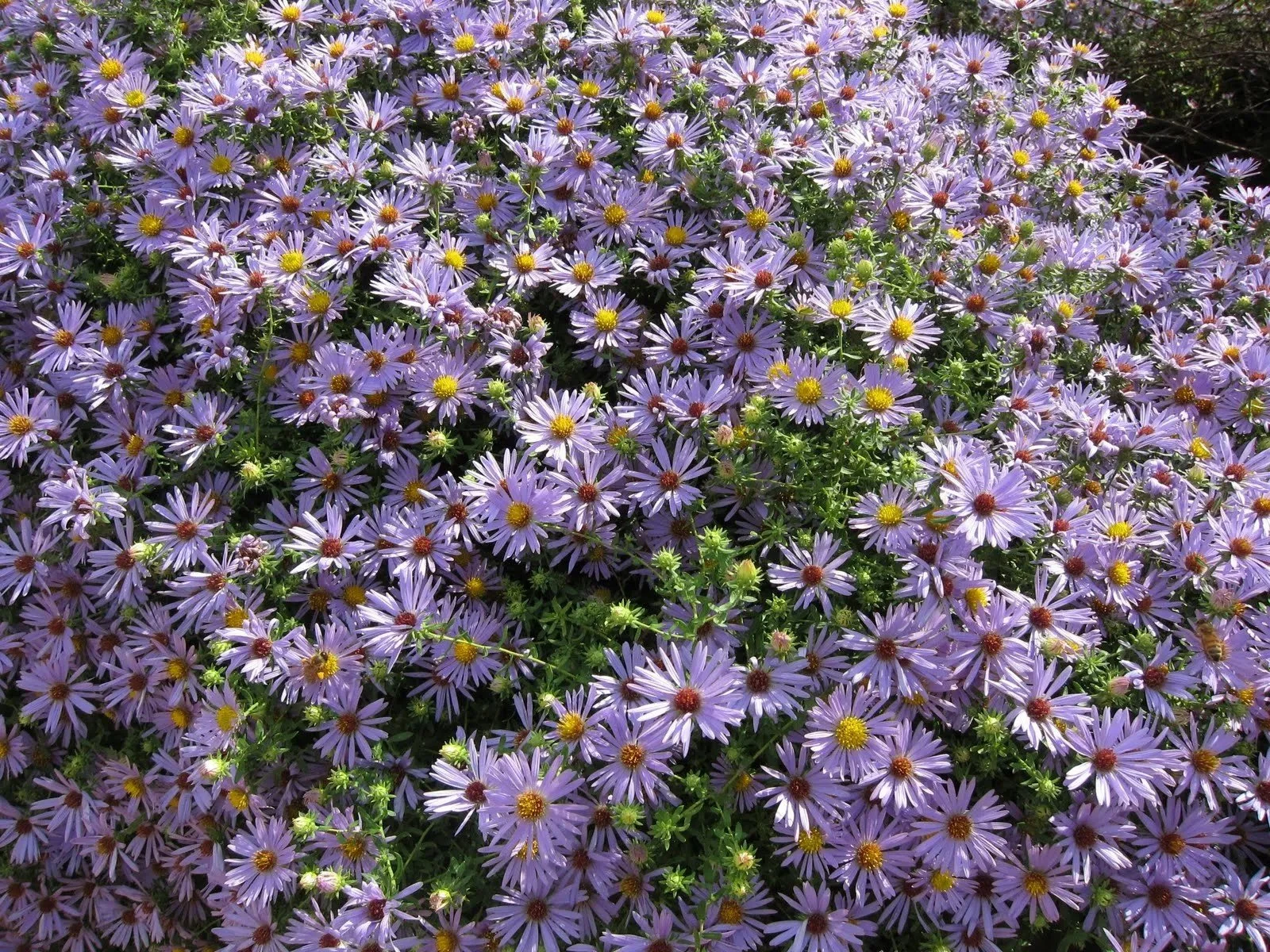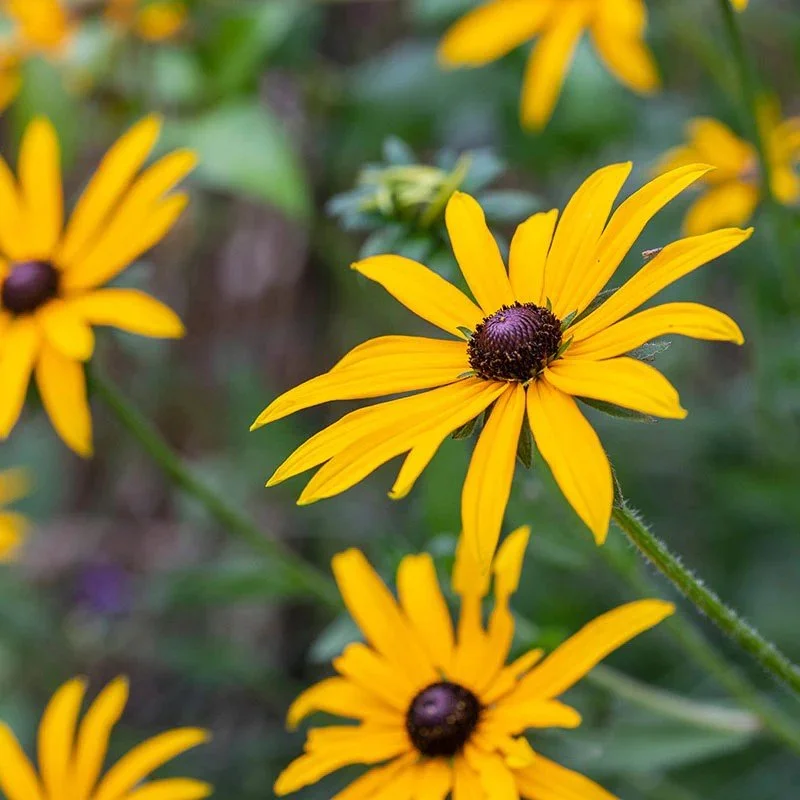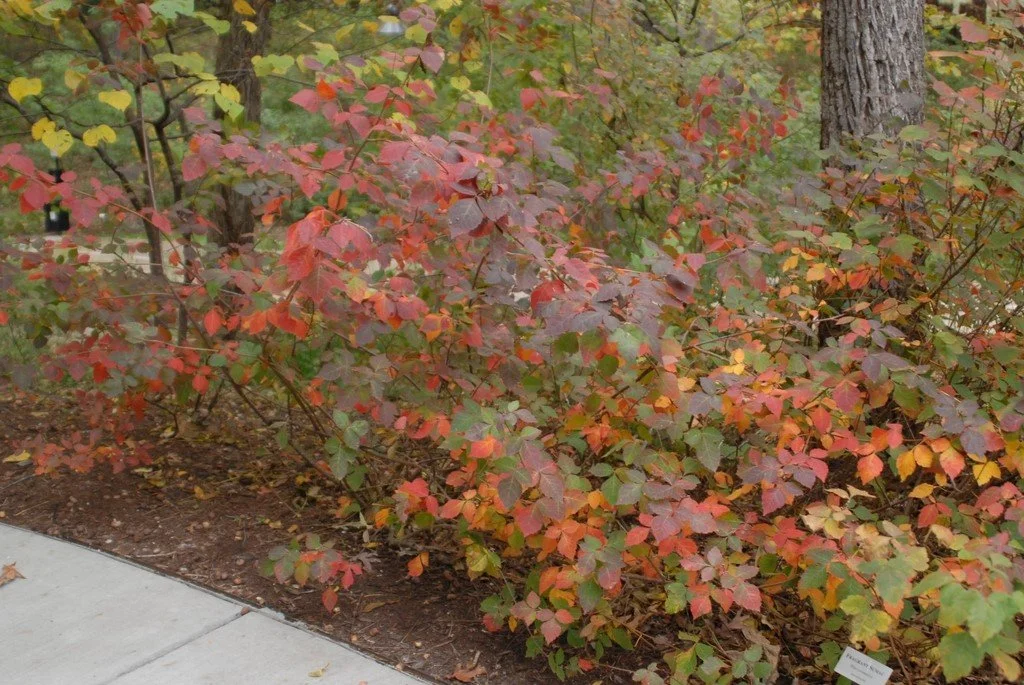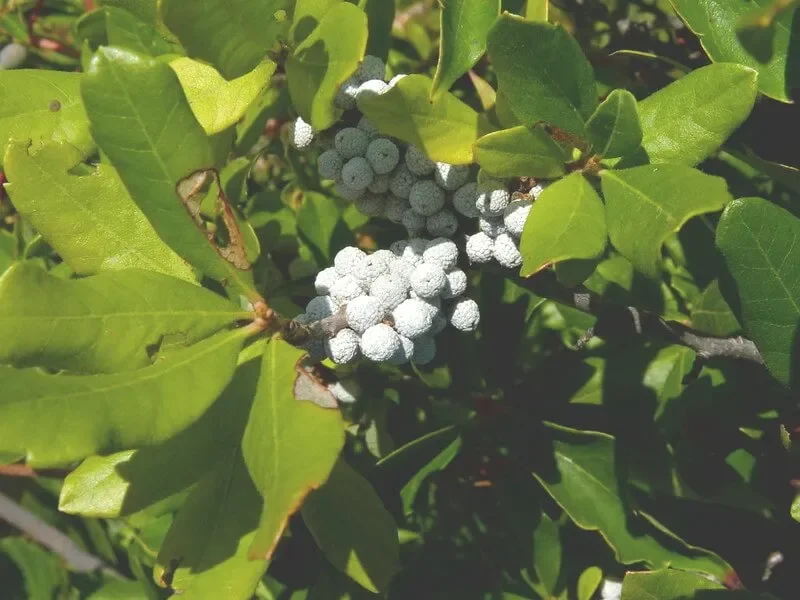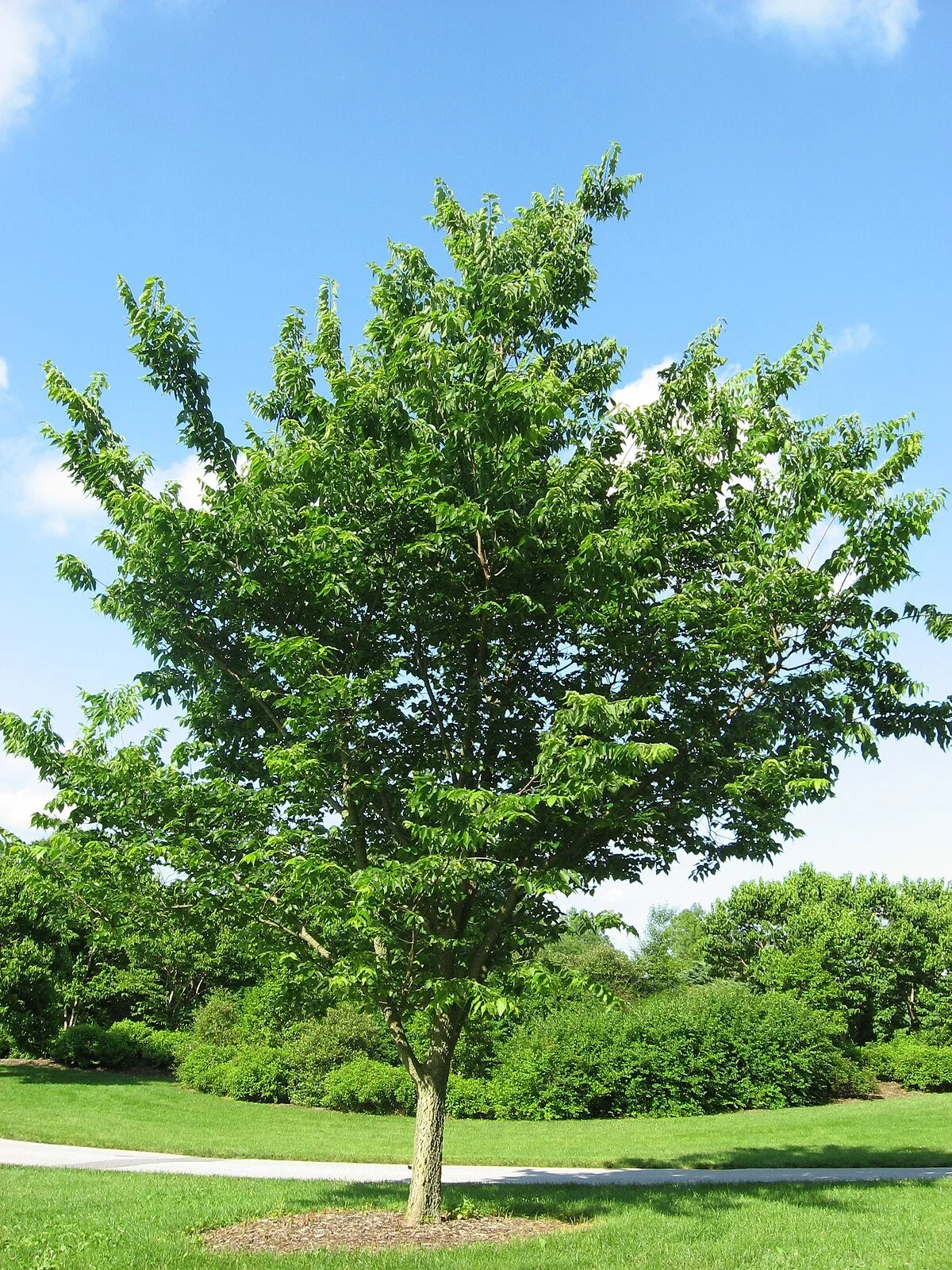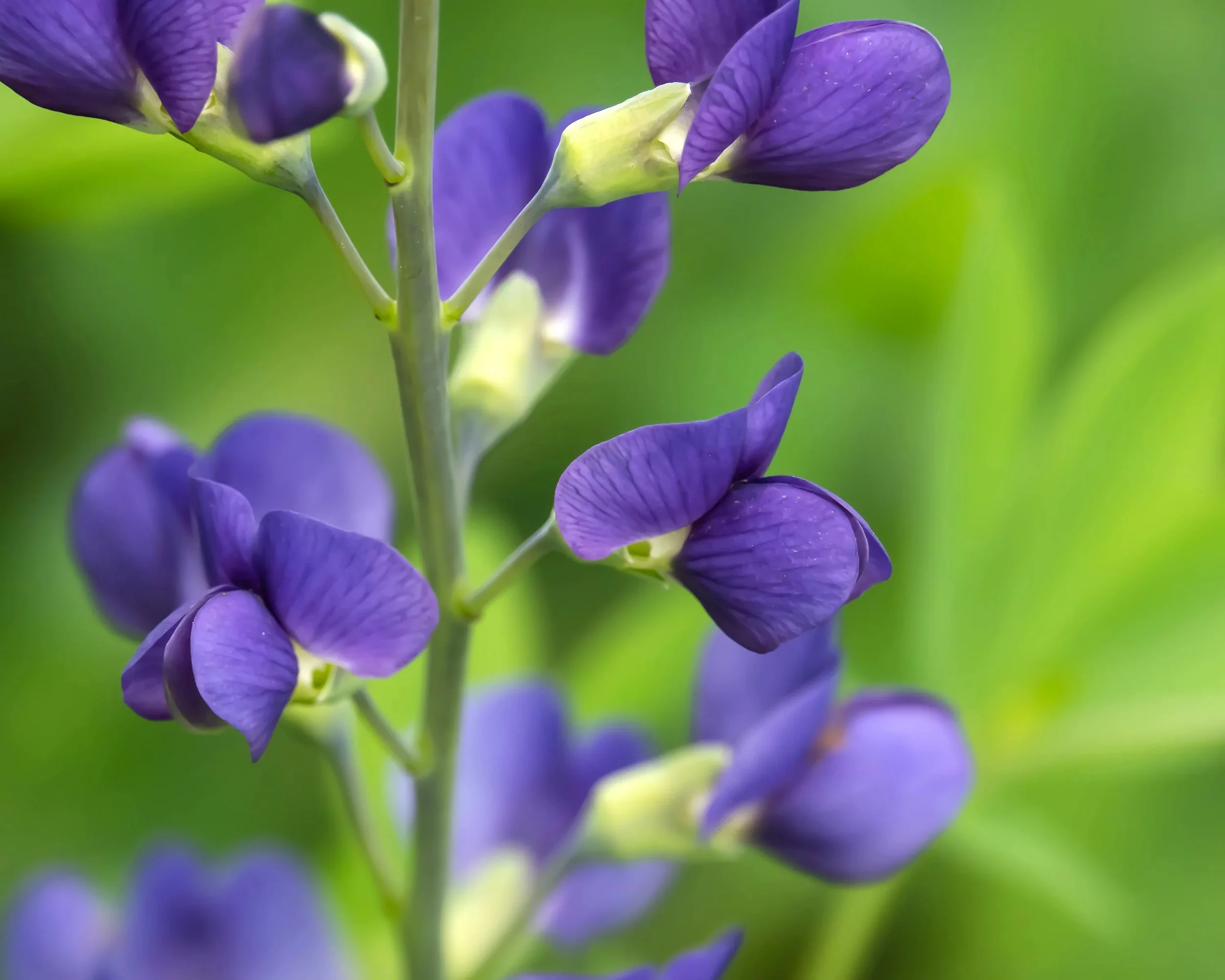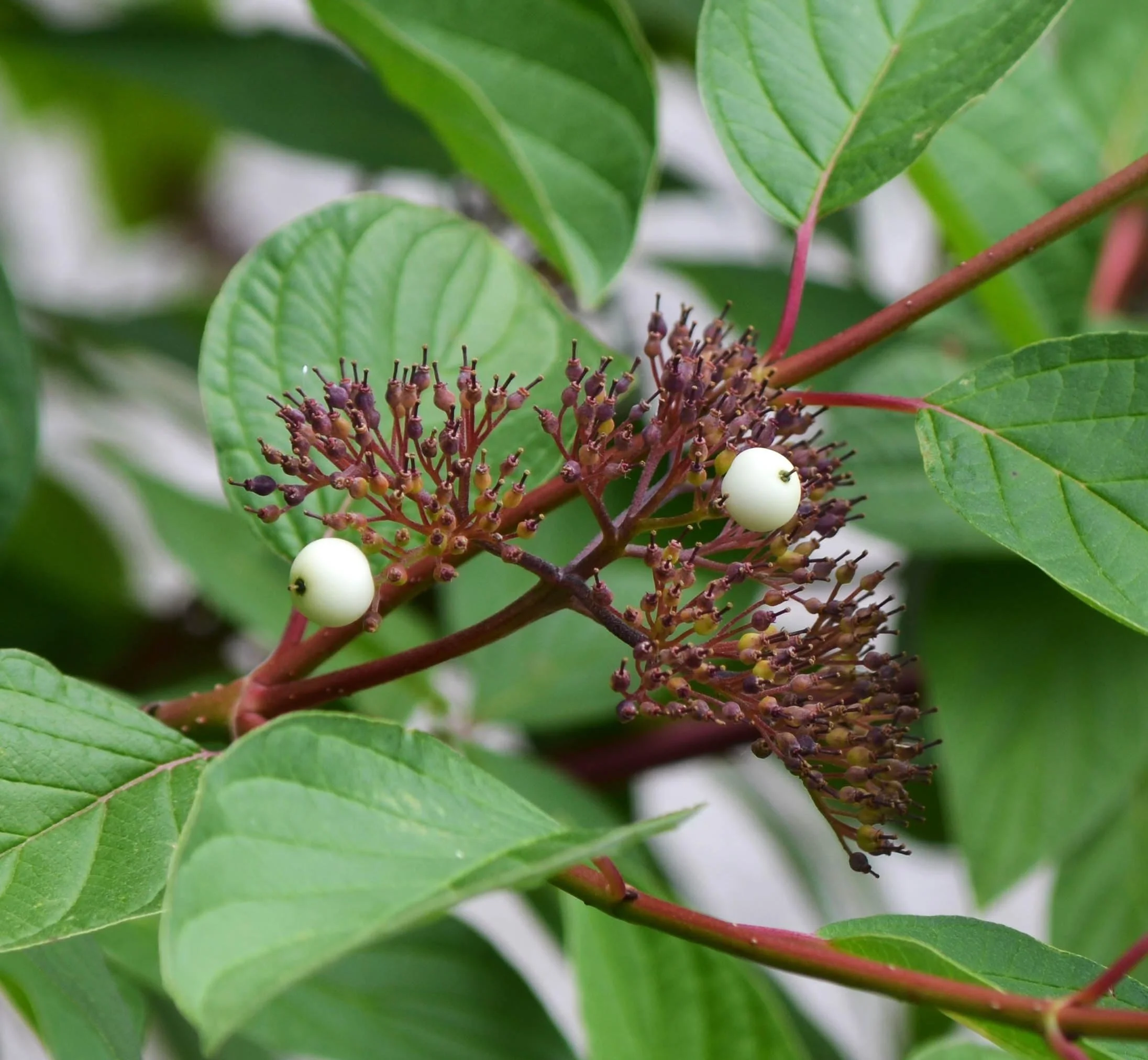
Meet our Native Plants at the lakefront.
Joe Pye Weed
Common Name: Joe Pye Weed, little Joe
Latin Name: Eutrochium Dubium
Type: Herbaceous perennial
Benefits: resiliency, medicinal use, pollination, host plant, carbon reduction
Native Range: Southeast Canada to Eastern United States
Joe Pye weed blooms later than most plants, allowing for a pop of color from late august until the first seasonal frost.
The plant attracts various creatures, including butterflies, bees, and birds. The plant commonly acts as a host plant for caterpillars. While it does attract animals, deer and rabbits tend not to eat Joe Pye Weed due to its bitterness.
Joe Pie Weed has a long history of being used for medicinal purposes. The plant has been used for diuretic support, promoting kidney health and helping reduce water retention. It’s also been used to treat joint stiffness, gout, reproductive issues, and managing glucose levels.
Joe Pye weed actively supports carbon sequestration. By storing carbon in its extensive biomass, it helps reduce atmospheric CO₂ and contributes to climate change mitigation—making it a valuable ally in restorative landscaping and native plant preservation. The plant also counters erosion due to its resiliency.
Eastern Bluestar
Common Name: Eastern Bluestar
Latin Name: Amsonia Tabernaemontana
Type: Herbaceous
Benefits: pollination, food source, shelter
Native Range: Central and Eastern North America
Eastern Bluestar is a hardy native perennial that forms a dense, shrubby shape from multiple upright stems. Its rich green, lance-shaped leaves climb tall stalks, With a mature size of about 3½ feet tall and 2 feet wide.
The Eastern Bluestar blooms with a soft blue color, which invites bees and butterflies due to the plants' color, height, shape, and abundance of pollen and nectar.
After its spring bloom, Bluestar develops slender, bean-shaped seed pods that mature into rich brown accents. These pods often persist into winter, bringing texture and visual interest to dormant gardens while subtly supporting seed dispersal and wildlife.
Amsonia Tabernaemontana - The genus name commemorates Dr. Charles Amson, an 18th-century physician from Virginia, while the species name pays tribute to Jacob Tabernaemontanus—a 16th-century German physician, botanist, and author of The New Herb Book.
White Swamp Oak
Common Name: White Swamp Oak
Latin Name: Quercus bicolor
Type: Fagaceae
Benefits: shade, privacy, shelter, resistance, woodworking qualities, wildlife habitat
Native Range: Eastern-Central Midwestern United States
Swamp white oak is a medium-sized deciduous tree, living up to 300 years. It typically reaches 50–60 feet in both height and spread, featuring youthful bark that peels before aging into a deeply ridged, dark brown texture. Its nondormant acorns sprout soon after falling, and its strong, durable wood is highly valued for a variety of uses.
Swamp white oak acorns are naturally sweet and are a staple in the diets of squirrels and other small animals. Some birds, such as ducks. rely on these acorns as a seasonal food source.
Swamp white oak thrives in damp soils with a high-water table, whether mineral based or rich in organic matter like peat. It typically grows in landscapes that are occasionally flooded, such as stream valleys, pond edges, and low-lying fields, but not in places that remain constantly submerged. The Swamp White Oak stabilizes damp environments.
Prairie Dropseed
Common Name: Prairie Dropseed
Latin name: Sporobolus Heterolepis
Type: Poaceae bunchgrass
Benefits: Low Maintenance, Bird-Friendly: Versatility, Soil Adaptability, Drought Tolerance, Year-Round Interest, Supports Native Ecosystems
Native Range: Midwestern-Eastern United States
Prairie Dropseed is a bunch-grass that forms neat, arching clumps of green leaves, turning to a golden rust color in the fall. From late July to mid-September, flower clusters rise above the foliage, filled with tiny florets that yield small round seeds. Hardy and enduring, it resists snow-flattening.
Small brown seeds fall naturally in autumn months, feeding wildlife such as birds and small rodents. Though difficult to germinate, these seeds are vital for reproduction and can be used to grow new plants.
Due to its durability to sustain droughts and heat, Prairie Dropseed was an essential first choice in prairie restoration.
Aromatic Aster
Common Name: Aromatic Aster
Latin name: Symphyotrichum Oblongifolium
Type: Herbaceous perennial herb.
Benefits: Pollination, Drought resistance, Wildlife habitat, Erosion Control, Medicinal use, Aesthetic appeal,
Native Range: Central United States, specific Eastern States (New York)
Aromatic aster is a resilient native wildflower reaching up to 3 feet tall, with sturdy branching stems and oblong leaves. When crushed, its stems release a pleasant balsam-like fragrance, adding a sensory element to garden spaces. Blooming in shades of blue or purple from midsummer through November, it's among the final floral displays before frost.
Aromatic aster blooms draw species such as bees and butterflies in order to pollinate. While bees benefit from both nectar and pollen, most insects are after the nectar, making this late-season wildflower a vital energy source before frost sets in. Wild birds often consume the seeds and foliage.
Tea can be made from the roots of the aromatic aster, which has been used medicinally to treat fevers.
Aster refers to the Greek word for star, as the blooming flowers resembles stars.
New Jersey Tea
Common Name: New Jersey Tea
Latin name: Ceanothus americanus
Type: shrub
Benefit: pollinators, butterfly + insect host, medicinal, drought tolerant, nitrogen fixing
Native range: Eastern and Central North America
A deep-rooted deciduous shrub found in dry prairies, open woods, and rocky hillsides.
Flowers are small, white, and fragrant. important nectar source for pollinators including bees and butterflies - A larval host for several butterfly species
Roots were historically used by Indigenous peoples and settlers for medicinal teas, including as a respiratory remedy during the Revolutionary War—hence the common name "New Jersey Tea."
Drought tolerant and capable of nitrogen fixation, making it valuable for remediation.
Best suited to well-drained soils and full sun to partial shade.
Orange Coneflower
Common Name: Orange Coneflower
Latin name: Black Eyed Rudbeckia fulgida “goldstrum”
Type: Perennial
Benefits: pollination, host plant, bird food, ornamental
Native Range: Eastern and Central United States
‘Goldsturm’ is a popular cultivar of Rudbeckia fulgida, selected for its compact growth, abundant golden-yellow flowers with dark centers, and long bloom time from mid-summer into fall.
Attracts a wide range of native pollinators, including bees and butterflies.
Serves as a larval host for certain butterfly species and provides seeds for birds in fall and winter.
Adaptable - tolerates drought, clay soil, and urban conditions once established.
Commonly used in native plant gardens, meadow plantings, and mass plantings for erosion control or visual impact.
Northern Bush Honeysuckle
Common Name: Northern Bush Honeysuckle
Latin name: diervilla lonicera
Type: shrub
Benefits: erosion control, drought tolerant, deer resistant, insect host
Native Range: Northeastern and North-Central United States, Southeastern Canada
A tough, adaptable native shrub commonly found in dry woods, rocky slopes, and forest edges.
it is not a true honeysuckle and is non-invasive, unlike many introduced honeysuckle species.
It offers excellent drought tolerance and soil stabilization, making it ideal for slopes, restoration areas, and urban settings.
Its compact size, reddish fall color, and tolerance for tough conditions have made it a favorite for native landscaping.
Its small yellow flowers attract bumblebees, native bees, and other pollinators throughout the summer, and is a host plant for butterflies and other native insects.
Cransebill Geranium
Common Name: Cransebill Geranium
Latin name: Geranium Macrorrhuzum
Type: Perennial
Benefits: groundcover, drought tolerant, deer resistant, host plant
Native Range: Eastern North America
A native woodland perennial with delicate pink to lavender flowers that bloom in spring and early summer.
Tolerates part to full shade; ideal for woodland gardens and shady borders yet can grow in full sun with consistently moist soil.
A nectar source for a wide variety of pollinators.
Seeds are eaten by birds, and foliage is typically deer and rabbit resistant.
Medicinal uses: Indigenous Americans boiled the entire plant to treat diarrhea, used root tea as a rinse for sore throats and mouth ulcers, and applied powdered root to promote blood clotting.
Gray Dogwood
Common Name: Gray Dogwood
Latin name: Cornus Racemosa “muskingum”
Type: shrub
Benefits: erosion control, drought tolerant, bird habitat, host plant
Native Range: Eastern and Central America
A dense, multi-stemmed native shrub that thrives in a wide range of soil and moisture conditions, including dry uplands and wet lowlands.
It produces small, creamy white flowers in late spring, which attracts a variety of pollinators. In late summer, white berries develop on red stems, which are quickly eaten by birds. It also serves as a host plant for butterflies and other native insects.
Drought tolerant, and useful for stabilizing slopes and controlling erosion in restoration or naturalized plantings.
It spreads slowly by suckers and can form dense thickets, which provide excellent cover and nesting habitat for wildlife.
Common Yarrow
Common Name: common yarrow
Latin name: achillea millefolium
Type: perennial
Benefits: erosion control, drought resistant, deer resistant, medicinal use
Native Range: Temperate regions of Northern Hemisphere
A hardy, adaptable perennial found in meadows, grasslands, open woodlands, and disturbed areas. Tolerates poor soil, drought, and light foot traffic. Best suited for full sun and well-drained soil.
Produces flat-topped clusters of small white to pale pink flowers from late spring through summer, attracting bees, butterflies, and other beneficial insects.
Foliage is fern-like, aromatic, and typically avoided by deer.
Historically used by Indigenous peoples and herbalists to treat wounds, fevers, and digestive issues.
The genus name honors Achilles, who was said to use the plant to treat his soldiers' injuries.
River Birch
Common Name: river birch
Latin name: betula nigra
Type: tree
Benefits: erosion control, shade, fast growth, host plant/habitat
Native Range: Eastern and Southeastern United States
A fast-growing, moisture-loving deciduous tree that is often found along rivers, streambanks, and floodplains. It features beautiful peeling bark in shades of salmon, cream, and cinnamon. Its flowers are wind-pollinated catkins, but the tree supports a wide range of native insects.
Seeds are eaten by birds, and the tree provides nesting and cover for many bird species.
Excellent for erosion control along streambanks due to its fibrous root system.
Adaptable to a variety of soils and moisture levels but prefers moist to wet conditions.
Cultivars like ‘Heritage’ are popular for landscape use due to improved disease resistance and exfoliating bark.
Frarant Sumac “Gro-low”
Common Name: Frarant Sumac “Gro-low”
Latin name: Rhus Aromatic
Type: shrub
Benefits: erosion control, drought tolerant, bird habitat,
Native Range: Eastern and Central United States, Southern Canada
A low growing, spreading cultivar of Rhus Aromatica known for its dense foliage and excellent performance as a groundcover or erosion control plant, especially on slopes or in poor soils. It produces small yellow flowers in the early spring that attract native bees and other pollinators.
Glossy, aromatic foliage turns brilliant shades of orange, red, and purple in fall, providing strong seasonal interest.
Non-aggressive and well-behaved in designed landscapes, while still offering strong ecological value.
Female plants develop clusters of small red berries in late summer that are eaten by birds and small mammals. The plant also acts as a larval host.
Northern Bayberry
Common Name: northern bayberry
Latin name: myrica pensylvanica
Type: deciduous shrub
Benefits: erosion control, drought tolerant, nitrogen fixation, aromatic, deer resistant, bird food, bird habitat/insect host.
Native Range: Eastern United States and Canada
A tough, salt and drought-tolerant coastal shrub is often found in sandy soils, dunes, and dry uplands. A low maintenance plant and can thrive in difficult soils. Commonly used for native hedgerows, erosion control, and coastal plantings.
Leaves are leathery and aromatic when crushed, releasing a distinctive scent.
Produces small grayish-white wax-coated berries on female plants, a vital food source for birds.
Northern Bayberry is one of very few native nitrogen-fixing shrubs in eastern North America, improving soil fertility, useful in restoration or coastal stabilization projects.
Provides cover and nesting habitat for wildlife and supports various insect species, including native moths. Deer and rabbit resistant.
Common Hackberry
Common Name: common hackberry
Latin name: Celtis occidentalis,
Type: deciduous tree
Benefits: drought tolerant, city tolerant, erosion control, host
Native Range: Eastern and Central North America
A medium to large deciduous tree found in floodplains, open woods, and urban areas.
It produces small, sweet, orange to reddish berries in late summer and fall, consumed by birds and small mammals.
The tree is drought tolerant, resists poor soils, urban pollution, and compaction, making it a popular choice for city planting. Effective at stabilizing soils and controlling erosion along waterways and disturbed sites
Flowers provide pollen and nectar for bees and other pollinators. Serves as a larval host for several butterfly species including the tawny emperor (Asterocampa clyton) and hackberry emperor (Asterocampa celtis). The corky, ridged bark provides winter shelter and habitat for many insects and birds.
Black Chockeberry
Common Name: Black Chockeberry
Latin name: aronia melanocarpa
Type: Decidious shrub
Benefits: erosion control, drought tolerant, medicinal use, host plant, pollinator
Native Range: Northeastern and Central North America
Tolerant of a wide range of soils including wet, dry, acidic, and poor soils, making it useful for erosion control and naturalized plantings. Highly drought tolerant once established and deer resistant, suitable for wildlife gardens and restoration projects.
Supports numerous native insects, including pollinators and butterfly larvae.
The dense, thorny branches provide excellent nesting cover and protection for birds
A hardy native shrub known for its showy white to pinkish flowers in spring that attract native bees and butterflies. It produces dark purple to black berries in late summer and fall that are a vital food source for many bird species and small mammals.
The berries are high in antioxidants and have been used in traditional medicine and modern supplements.
Anise Hyssop
Common Name: anise hyssop
Latin name: Agastache foeniculum
Type: perennial
Benefits: drought tolerant, pollinator, deer resistant, aromatic, medicinal, host plant
Native Range: Northern and Central United States, Southern Canada
Tolerant of drought, poor soil, and deer, making it ideal for low-maintenance native gardens and meadows. Can be grown in full sun to light shade, but best flowering occurs in full sun. Leaves can be used fresh or dried for herbal teas.
A fragrant native mint-family perennial known for its licorice-scented leaves and lavender-purple flower spikes that bloom mid to late summer.
As part of the mint family, its dense foliage can shade soil and suppress weeds, acting as a soft groundcover in sunny gardens.
Extremely attractive to bees, butterflies, and hummingbirds, one of the top native pollinator plants. Seeds are eaten by goldfinches and other small birds in the fall.
Traditionally used by Indigenous Americans for tea to treat colds, coughs, and fevers.
Blue False Indigo
Common Name: Blue False Indigo
Latin name: Baptisia australis
Type: Perennial
Benefits: pollinator, host plant, drought tolerant, nitrogen fixation,
Native Range: Central and Eastern United States
Slow to establish but extremely long-lived and low-maintenance once mature, A long-lived native prairie perennial with striking blue-purple flowers that bloom in late spring to early summer tall spikes. It also produces decorative black seed pods in late summer and forms a shrub-like clump of blue-green foliage.
It thrives in full sun and well-drained soils, especially in prairies, open woods, or dry slopes.
Its flowers and tall spikes attract native bees and bumble bees, and the plant acts as a host plant for butterfly and moth species.
Fixes nitrogen in the soil through a symbiotic relationship with root bacteria, enriching soil.
Red Twig Dogwood
Common Name: Red Twig Dogwood
Latin name: cornus serica “cardinal”
Type: deciduous shrub
Cultivar: cardinal
Benefits: pollinators, bird habitat, host plant, erosion control
Native Range: Northern North America
A multi-stemmed native shrub best known for its bright red stems, which offer standout color in the winter landscape.
Excellent for erosion control along stream banks, slopes, or disturbed soils due to its fast growth and suckering habit.
The cultivar ‘Cardinal’ is valued for its particularly vibrant red stems and dense, upright growth habit—great for hedges, rain gardens, or wildlife borders.
It thrives in wet to average soil and tolerates clay, making it ideal for restoration sites and naturalized plantings.
It produces clusters of creamy white flowers in late spring that attract a wide range of native pollinators.
White berries develop in summer, providing food that is quickly consumed by songbirds and other wildlife.
A host plant for the Spring Azure butterfly and other native insects.
Switchgrass
Common Name: Switch Grass
Latin Name: Panicum virgatum
Cultivar: Type: Herbaceous
Benefit: bird habitat, bird food, butterfly + insect host, soil stabilization
Native range: Most of North America, from southern Canada into Mexico, excepting the westernmost states and provinces.
This grass grows in three to four foot tall clumps that retain their vertical columnar form.
In mid summer, the plant produces clouds of airy panicles of pinkish flowers up to six feet tall, which can contribute an ethereal texture to a meadow or garden.
The seeds that follow are also finely textured and persist into the winter, along with the foliage which turns beige or pale yellow, adding much needed winter interest to the garden.
This highly adaptable and low maintenance plant prefers full sun but can adapt to drought, air pollution, poor soils, occasional flooding, deer, black walnut, and erosion.
This species shows high diversity throughout its extensive range, with northern ecotypes tending to be shorter.
Switch Grass has a very deep fibrous root system nearly as long as the plant is tall. These deep roots provide the plant with resilience to drought, and are very good at stabilizing soils and sequestering carbon. These and other deep rooted plants of the North American prairies created the exceptionally rich soils which today’s farms of the midwest benefit from.
Many kinds of birds readily eat the seeds of this grass, which provide important sustenance into the winter months. The dense stands also provide winter cover for birds and small mammals.
Many insects also feed on the foliage, many of which are in turn eaten by birds. Overall, the ecological value of this grass is exceptional.
Wild Bergamot
Common Name: Wild Bergamot
Latin name: Monarda fistulosa
Type: Herbaceous perennial
Benefits: Pollinators, host plant, medicinal uses, drought tolerant, deer resistant
Native Range: Central and Eastern North America
A clump-forming native wildflower known for its showy, lavender to pinkish-purple blooms and strong minty fragrance.
It thrives in full sun and well-drained soils but is adaptable to a range of conditions, including dry and rocky sites. Its aromatic foliage makes it unappealing to deer, while its nectar-rich flowers draw in bees, butterflies, and hummingbirds throughout mid to late summer.
Wild Bergamot is a host plant for the Raspberry Pyrausta moth and attracts a diversity of native pollinators, including long-tongued bees and skippers. Its tubular flowers are especially beneficial for native bumblebees and hummingbirds.
It spreads slowly by rhizomes, making it suitable for naturalized meadows, borders, and pollinator gardens. In addition to its ecological value, it has a long history of medicinal use by Indigenous peoples, especially for treating colds and respiratory issues.
Purple Coneflower
Common Name(s): Purple Coneflower, Echinacea
Latin Name: Echinacea purpurea
Cultivar: ‘Pow Wow Wild Berry’ Type: Herbaceous
Benefit: pollinators, bird food, butterfly + insect host, edible, medicinal
Native range: Central US Notes:
Often marketed as a native plant outside its native range, this flower nonetheless provides many ecological benefits.
The distinct dark pink flowers and easy care of this plant have made it very popular in the landscape trade. It is also very popular with pollinators, providing nectar to a variety of bees and butterflies. Finches also readily eat the seeds.
Removing spent flowers will encourage a rebloom but leaving them allows reseeding and provides winter forage for birds.
The lifespan of Echinacea plants can be relatively short, but dividing clumps and allowing reseeding can ensure they persist in your garden.
All parts of this plant were used by Native Americans in medicines. It is still widely used today by traditional herbalists for immune system support.
Many cultivars exist. ‘Pow Wow Wild Berry’ is compact and floriferous, with dark pink flowers that don’t fade with age.
Butterfly Milkweed
Common Name: Butterfly Milkweed
Latin name: Asclepias tuberosa
Type: Herbaceous perennial
Benefits: Pollinators, host plant, drought tolerant, erosion control, native bee support
Native Range: Eastern and Central North America
A striking native wildflower recognized for its brilliant orange blooms, Butterfly Milkweed is a magnet for pollinators and a staple of prairie, meadow, and native garden plantings.
Unlike many other milkweeds, it lacks milky sap and prefers dry to medium, well-drained soils in full sun. Its deep taproot makes it highly drought tolerant and ideal for tough, sunny sites, including slopes and roadside plantings.
The vibrant flower clusters bloom from early to mid-summer and are particularly attractive to butterflies, especially monarchs, for which they serve as a vital host plant. In addition, it supports a variety of native bees, skippers, and beneficial insects.
Butterfly Milkweed's upright habit and long-lasting color make it essential for restoration projects, pollinator gardens, and sunny borders. Its foliage is narrow and deep green, offering fine-textured contrast to neighboring plants. It’s slow to establish due to its taproot, but long-lived and low maintenance once settled.
Meet our native plants downtown.
The plants that were chosen for downtown Geneva are more than just landscaping, they are part of a green infrastructure plan designed to support ecosystems, encourage environmental solutions, and uphold the purity of Seneca Lake. View the video below for an introduction to how green infrastructure is working for Geneva and other towns throughout the Finger Lakes region. Then, scroll down to learn more about the native plants that are part of our urban landscape.
Allegheny Serviceberry
Common Name(s): Serviceberry, Juneberry, Shadbush, Shadblow
Latin Name: Amelanchier laevis ‘Prince Charles’
Cultivar: Type: Medium tree
Benefit: pollinators, bird habitat, bird food, butterfly + insect host, edible
Native range: Southeastern Canada to Northeastern US; Great Lakes; Appalachian Mountains
There are two kinds of Serviceberries planted in the downtown beds both of which are native to the east and northeast.
The Amelanchier genus includes several species of small trees and shrubs that share similar characteristics, including white flowers in early spring followed by purple-black berries in early summer. The two Serviceberries present in the downtown beds are very similar and may be difficult to distinguish.
Several species are native to New York, and can be easily picked out in early spring, when their white flowers bloom in woodland edges and the forest understory before the trees leaf out.
Serviceberries have become increasingly used in urban settings, due to their adaptability, graceful form, and excellent fall color.
Apple Serviceberry
Common Name(s): Apple Serviceberry, Juneberry, Shadbush, Shadblow
Latin Name: Amelanchier grandiflora
Cultivar: Type: Medium tree
Benefit: pollinators, bird habitat, bird food, butterfly + insect host, edible
Native range: Southeastern Canada to Northeastern US; Great Lakes; Appalachian Mountains
These early spring flowers are an important source of nectar and pollen for early emerging pollinators.
The berries are edible and very tasty. However, they are also highly sought after by birds, who tend to consume the fruit the moment they ripen, leaving little behind for two-legged foragers.
Serviceberries have a variety of common names, including Shadbush and Shadblow, which refers to the coinciding of the bloom with the appearance of shad fish in streams; Serviceberry, which refers to the coinciding of the bloom with Easter and spring burials; and Juneberry, because the fruit ripens in June.
Black Eyed Susan
Common Name: Black Eyed Susan
Latin Name: Rudbeckia fulgida
Cultivar: Type: Herbaceous
Benefit: pollinators, bird food, butterfly + insect host.
Native range: Scattered locations throughout eastern North America from Wisconsin to Florida.
This adaptable plant tolerates urban conditions including poor soils, air pollution, heat, and drought. However, it benefits from good air circulation which helps prevent fungal diseases. This plant spreads easily via rhizomes and seeds, often colonizing nearby areas.
Black Eyed Susan is very popular with both pollen and nectar seeking insects. Other insects feed on the foliage, including the larva of several butterfly and moth species. It’s also very popular with gardeners, thanks to its prolific cheerful blooms.
Removing spent blooms will encourage further flowering, but many gardeners allow some seedheads to develop, as the seeds are popular with many kinds of birds. Further, the seedheads persist into winter and their black color and spiky form can contrast well with the dried foliage of grasses.
Black Gum Tupelo
Common Name(s): Black Gum, Black Tupelo
Latin Name: Nyssa sylvatica Cultivar: Medium tree
Benefit: pollinators, bird habitat, bird food, butterfly + insect host, edible
Native range: South and eastern US
Usually found in moist lowlands, this tree can adapt to drier soils and urban conditions.
A deep taproot makes this tree hard to transplant, and therefore hard to grow commercially.
Trees are usually dioecious, meaning individuals bear only male or female flowers. Only female trees bear fruit but require a male pollinator nearby to do so.
Nectar from its flowers is prized by bees; the resulting Tupelo honey is prized by people.
The blue-black fruit ripens in late summer or fall and, while sour, is edible. Birds highly value the fruit which has a high fat content. It is an important food source for migrating birds, as it can persist into early winter.
The fall display is truly spectacular. Leaf color varies, from dark purple to yellow to orange to scarlet.
Blue Flag Iris
Common Name: Blue Flag Iris
Latin Name: Iris versicolor
Cultivar: Type: Herbaceous
Benefit: pollinators, butterfly + insect host
Native range: Southern and eastern Canada and the Great Lakes; northeastern US south to Virginia
This plant prefers wet soils and is found in wetlands, wet meadows, and pond edges.
The striking blue-purple flowers are attractive to several kinds of nectar seeking bees and butterflies as well as hummingbirds. The distinct petals have evolved lobes for bees to land on and prominent vein patterns that direct them to the nectar. Unlike Bearded Irises, which are Eurasian cousins, these petals lack hairs.
While used medicinally in small amounts by Native Americans, all parts of the plant are toxic if ingested. Sometimes contact with the sap can also cause skin irritation.
The seeds have a corky coating that allows them to float, helping with seed dispersal.
It can absorb excess nutrients from water and is sometimes used for water quality improvement.
Cardinal Flower
Common Name(s): Cardinal Flower
Latin Name: Lobelia cardinalis
Cultivar: Type: Herbaceous
Benefit: pollinators, bird food, medicinal
Native range: Southeastern Canada south to Florida; central and southwestern US; Mexico to Columbia
This short lived perennial requires moist soils and can be found in wetlands throughout its range. While short lived, it can reseed prolifically in the right conditions.
Often appears near waterways after a disturbance such as a flood creates openings in existing riparian vegetation.
Cardinal flower is so named because the bright red flowers resemble the color worn by Roman Catholic Cardinals.
This plant forms a rosette, or cluster of stemless leaves close to the ground. The rosette can persist into winter. In summer, it sends up 2-4’ stems which bear the flowers and seeds.
Considered toxic if ingested in large quantities, it was used medicinally by several Native American peoples.
The late summer blooms are easily noticed from a distance, as the bright red color is relatively rare in flowers. They are very attractive to hummingbirds and butterflies, which are its primary pollinators.
Hummingbird-pollinated flowers tend to be tubular (designed for long beaks and tongues) and red, orange, or pink in color. The association between hummingbirds and red flowers has long been noted, though scientists struggle to understand why.
Common Hackberry
Common Name: Common Hackberry
Latin Name: Celtis occidentalis
Cultivar: Type: Medium tree
Benefit: bird habitat, bird food, butterfly + insect host, edible
Native range: Central and northeastern US
This tough and adaptable tree makes for a good street tree, with its rounded form, fast growth rate, and good tolerance for urban conditions.
Distinct bark with irregular warty ridges makes identification easy, along with its rough-textured, asymmetrical leaves.
Many insects, including butterfly larva, feed on this tree. Some of these insects cause galls and witches brooms, which may be unsightly but don’t generally harm the tree.
Hackberry also produces a berry: borne singularly, the small round fruits mature to dark purple/black in the late summer or fall. Each fruit contains one large seed. The fruit and seed are both edible and were commonly used in Native American cooking.
Birds also eat the berries, which are high in protein and fat.
This tree is in the Cannabis family (Cannabaceae) and is therefore a cousin of both Hemp and Marijuana.
Dwarf Arctic Willow
Common Name(s): Dwarf Arctic Willow, Basket Willow
Latin Name: Salix purpurea
Cultivar: ‘Nana’ Type: Shrub
Benefit: pollinators, bird habitat, bird food, butterfly + insect host, soil stabilization, medicinal
Native range: Europe, northern Africa, and Asia
While not technically native ( it was introduced from Europe to control erosion along stream banks) it has spread into natural areas and is now commonly found throughout the Great Lakes and Northeast.
Unlike most other invasive species, Dwarf Arctic Willow supports a wide variety of indigenous invertebrate life. Willows are considered to have very high ecological value, and while native species are preferable, the Dwarf Arctic Willow still provides many of the same benefits.
These benefits include a very early bloom which provides pollen at a time when few other blooms are present; a huge number of insects and their larva feed on the foliage and wood, including many kinds of moths and butterflies; many birds feed on these insects, as well as the flowers and buds; deer and other mammals feed on the twigs and foliage; the dense foliage provides nesting habitat for birds and cover for small mammals.
Like other willows, this plant prefers moist soils and does well on stream banks and low spots. The Dwarf Arctic Willow can tolerate drier conditions than most other willows.
While still widely used for erosion control, ‘Nana’ is also sold as an ornamental for its purple stems, finely textured foliage, and elegant silvery green color.
The thin, flexible branches have traditionally been used to make baskets.
The bark produces salicin, which has an effect similar to aspirin, and has a long history of use as a pain reliever and anti-inflammatory.
Fragrant Sumac
Common Name: Fragrant Sumac
Latin Name: Rhus aromatica
Cultivar: ‘Gro Low’ Type: Shrub
Benefit: pollinators, bird habitat, bird food, butterfly + insect host, soil stabilization
Native range: Southern Canada to Northern Mexico
This shrub has a large native range and can be found in nearly every state of the continental US. It is most commonly found in forest margins, prairies, roadsides, and disturbed sites.
Wild varieties can range in size and habit, from a low spreading shrub to a tall loose thicket. ‘Gro Low’ has dense foliage and a consistent spreading habit, up to three feet tall and eight feet wide.
An excellent choice for dry, rocky, or difficult sites, this plant is primarily grown for its adaptability, reliability, and nicely textured foliage. Its suckering habit also make it a very popular choice for slope stabilization.
Its tiny yellow flowers have no ornamental value but do attract some pollinators. Its small reddish fruits similarly lack ornamental value but are eaten by some birds. The dense foliage provides good nesting habitat for birds.
Fragrant Sumac leaves closely resemble those of Poison Oak (Toxicodendron pubescens), which also has a compound leaf composed of three coarsely lobed leaflets. Fortunately, Poison Oak is only found in the southeast.
Poison Sumac (Toxicodendron vernix) can be found in our region but is not easily confused with Fragrant Sumac.
Little Bluestem
Common Name: Little Bluestem
Latin Name: Schizachyrium scoparium
Cultivar: ‘Prairie Blues’ Type: Herbaceous
Benefit: bird habitat, bird food, butterfly + insect host,soil stabilization
Native range: Most of North America, from southern Canada into Mexico, excepting the westernmost states and provinces.
This grass is one of the primary species found in the tallgrass prairies of the midwest, along with Big Bluestem, Switch Grass, and Indiangrass, which are sometimes referred to as ‘the four horsemen of the prairie.’
It also is often found in shortgrass prairies, which historically make up the drier, more western parts of the North American plains.
Little Bluestem is a clump forming grass, as are the other two grasses used in these plantings. It has a more upright habit and is taller than Tufted Hair Grass, and has a more arching habit and is shorter than Switch Grass.
This grass is noted for its distinct steely blue color, for which ‘Prairie Blues’ is selected. Other varieties are sometimes tinged with purple or red.
In the fall, it turns a beautiful coppery color which persists through the winter.
This highly adaptable and low maintenance plant prefers full sun but can tolerate drought, air pollution, poor soils, occasional flooding, salt, and heat. These qualities make it an excellent choice for urban settings.
Purplish late summer flowers on vertical stems are followed by fluffy seeds, which contrast well with the finer textured blooms of other grasses.
This grass is host to a variety of invertebrates that feed on its foliage, including the larva of several species of butterflies. Many birds also eat the seeds, which provide important winter forage. Additionally, the foliage provides good winter cover to small birds and mammals.
Common Name: Lurid Sedge
Latin Name: Carex lurida
Cultivar: Type: Herbaceous
Benefit: bird food, butterfly + insect host
Native range: Eastern North America Notes:
Carex (sedge) is one of the most species-rich genera, with nearly 500 native to North America alone. They are widespread in every continent except Africa, where they are largely missing from sub-Saharan parts. They are primarily found in moist woodlands, wetlands, and riparian areas.
Many species are very difficult to differentiate and require mature fruit, root structure, and basal (base) portions for an accurate ID. Lurid Sedge is clump forming with a graceful arching habit. Each leaf has a distinct V shaped channel running its length, and spiky seed heads in groups of 1-4. It can be distinguished from similar sedges by minor differences in seed head color, size, and arrangement.
Sedges are an important part of a wide range of ecosystems, and provide food and shelter for many kinds of insects and birds.
Sedges generally grow most actively in cool, moist spring weather and can die back in the summer heat. Lurid Sedge is less prone than other sedges to summer dieback.
Sedges are not true grasses but share similar morphology, namely long, narrow blade-like leaves.
Lurid Sedge
Purple Coneflower
Common Name(s): Purple Coneflower, Echinacea
Latin Name: Echinacea purpurea
Cultivar: ‘Pow Wow Wild Berry’ Type: Herbaceous
Benefit: pollinators, bird food, butterfly + insect host, edible, medicinal
Native range: Central US Notes:
Often marketed as a native plant outside its native range, this flower nonetheless provides many ecological benefits.
The distinct dark pink flowers and easy care of this plant have made it very popular in the landscape trade. It is also very popular with pollinators, providing nectar to a variety of bees and butterflies. Finches also readily eat the seeds.
Removing spent flowers will encourage a rebloom, but leaving them allows reseeding and provides winter forage for birds.
The lifespan of Echinacea plants can be relatively short, but dividing clumps and allowing reseeding can ensure they persist in your garden.
All parts of this plant were used by Native Americans in medicines. It is still widely used today by traditional herbalists for immune system support.
Many cultivars exist. ‘Pow Wow Wild Berry’ is compact and floriferous, with dark pink flowers that don’t fade with age.
Red Twig Dogwood
Common Name(s): Bailey Red Twig Dogwood, Red Twig Dogwood, Red Osier Dogwood
Latin Name: Cornus sericea Cultivar: ‘Baileyi’
Type: Shrub
Benefit: pollinators, bird food, butterfly + insect host, soil stabilization
Native range: North America except southeastern US
The most striking feature of this shrub is its red colored stems, which provide much needed interest in the winter landscape.
Clusters of small white flowers appear in late spring, followed by white or bluish berries in summer. The flowers are fragrant but not as showy as many other popular landscape shrubs. The fruit is mildly toxic to people.
This suckering shrub can be found in large colonies in the wild and can be used to stabilize soil on slopes and along streams. It is usually found in floodplains or along stream banks but can be grown in average soil as well.
The cane-like twigs can be used to make baskets.
The name comes from the Scandinavian word for skewer (for roasting meat): ‘dag.’
Native Americans used the inner bark as a tobacco substitute.
Dogwoods have very high ecological value in the landscape. Many kinds of pollinators visit the flowers and many other insects eat the foliage and sap. Mammals browse on the leaves and stems and birds prize the berries.
River Birch
Common Name: River Birch
Latin Name: Betula nigra
Cultivar: ‘Heritage’ Type: Medium tree
Benefit: bird food, butterfly + insect host, soil stabilization, edible Native range: Central and southeastern US
The River Birch is usually found in floodplains and streambanks in the wild, preferring moist, rich soils. However, it’s also adaptable to drier soils and hot temperatures, making it a popular choice for bioswales.
The exfoliating brown and tan bark is a distinctive characteristic. This, along with its graceful ovoid form and multi-stemmed trunks, make it a popular choice for landscaping as well.
It is sometimes used for soil reclamation and erosion control at strip mining sites, due to its tolerance for very acidic soils.
Birches produce catkins, or elongated clusters of small, non-showy flowers. It is monoecious, meaning it bears the male and female flowers separately. The more conspicuous male flowers form in fall and mature in spring, when they open and release large quantities of pollen into the air.
The sap of birches was harvested by Native Americans to make a sweet syrup similar to maple syrup. In Eastern and Northern Europe, birch sap is consumed fresh (birch juice) or lightly fermented. ● Many kinds of insects feed on birch trees, especially many kinds of moth and butterfly larva. These in turn feed many birds, as do the seeds, buds, and catkins.
The ‘Heritage’ cultivar has paler bark and good resistance to the bronze birch borer.
Soft Rush
Common Name: Soft Rush
Latin Name: Juncus effusus
Cultivar: Type: Herbaceous
Benefit: bird habitat, soil stabilization
Native range: North America, Europe, and Asia
This species is widely distributed in North America, Europe, and Asia and is found in freshwater and brackish wetlands and meadows. It is absent from arid and high altitude regions.
This grass is traditionally used to make Tatami mats in Japan and baskets by Native Americans, among other uses.
It forms dense stands that spread easily by seed and rhizome, which makes it very effective for soil stabilization. In the wild, these dense stands also provide shelter and nesting habitat for waterfowl.
Usually grown in wetlands, it can survive periods of drought as well as periods of inundation, making it a good choice for bioswales.
Switchgrass
Common Name: Switch Grass
Latin Name: Panicum virgatum
Cultivar: Type: Herbaceous
Benefit: bird habitat, bird food, butterfly + insect host, soil stabilization
Native range: Most of North America, from southern Canada into Mexico, excepting the westernmost states and provinces.
This grass grows in three to four foot tall clumps that retain their vertical columnar form.
In mid summer, the plant produces clouds of airy panicles of pinkish flowers up to six feet tall, which can contribute an ethereal texture to a meadow or garden.
The seeds that follow are also finely textured and persist into the winter, along with the foliage which turns beige or pale yellow, adding much needed winter interest to the garden.
This highly adaptable and low maintenance plant prefers full sun but can adapt to drought, air pollution, poor soils, occasional flooding, deer, black walnut, and erosion.
This species shows high diversity throughout its extensive range, with northern ecotypes tending to be shorter.
Switch Grass has a very deep fibrous root system nearly as long as the plant is tall. These deep roots provide the plant with resilience to drought, and are very good at stabilizing soils and sequestering carbon. These and other deep rooted plants of the North American prairies created the exceptionally rich soils which today’s farms of the midwest benefit from.
Many kinds of birds readily eat the seeds of this grass, which provide important sustenance into the winter months. The dense stands also provide winter cover for birds and small mammals. ● Many insects also feed on the foliage, many of which are in turn eaten by birds. Overall, the ecological value of this grass is exceptional.
Thornless Hawthorn
Common Name: Thornless Cockspur Hawthorn
Latin Name: Crataegus crus-galli
Cultivar: ‘Inermis’
Type: Small tree
Benefit: pollinators, bird habitat, bird food, butterfly + insect host, edible
Native range: Central and eastern North America
In the wild, this small tree has formidable 4 inch long thorns along its trunk, branches, and twigs. These oversized thorns likely evolved to deter browsing by now extinct megafauna, including Mastodons, Ground Sloths, Stag Moose, and Mammoths.
These thorns also happen to provide exceptionally protected nesting habitat for birds. ● Several thornless cultivars exist, including ‘Inermis’.
Dense foliage and wide, spreading habit make this a popular small shade tree.
Spring blooming white flowers are highly ornamental but have an unpleasant scent. Similarly, the bright red fruits which mature in the fall are technically edible but unpalatable, even to birds who generally leave the fruits alone.
The flowers are prized by pollinators, and the plant is also a larval host to many species of moths and butterflies.
Many other species of Hawthorn are native to other regions of the Northern Hemisphere, where they have a long history of culinary, medicinal, and ornamental use.
Tufted Hair Grass
Common Name: Tufted Hair Grass
Latin Name: Deschampsia cespitosa
Type: Herbaceous
Benefit: bird food, butterfly + insect host, soil stabilization
Native range: Alaska and most of Canada and Greenland; Western US to Mexico; northeastern US
Unlike many other native grasses, Tufted Hair Grass is not found in the prairies of the Midwest. It is common in Pacific coast prairies and in alpine meadows. In the east, it is found in wet meadows and roadsides.
Tufted Hair Grass forms attractive arching semi-evergreen clumps, but its most ornamental features are the flowers and seed heads. The loose, airy clusters of pale yellow-green flowers appear in early summer and are soon followed by seeds, which persist into the fall.
Seeds are popular with songbirds and the foliage is a larval host to several caterpillars.
Tufted Hair Grass has the capacity to uptake several heavy metals, making it a good candidate for phytoremediation projects.
Virgina Sweetspire
Common Name: Virginia Sweetspire
Latin Name: Itea virginica
Cultivar: ‘Little Henry’ Type: Shrub
Benefit: pollinators, bird food, soil stabilization
Native range: Southeast US Notes:
Virginia Sweetspire is found in wetlands and along stream banks in the wild, where it suckers freely. It can be used in urban settings in bioswales where it can help stabilize the soil and can tolerate periodic inundation.
Tiny, fragrant white flowers in drooping spires appear in early summer. Flowers are very attractive to nectar seeking pollinators.
The flowers mature into capsules containing tiny seeds, which are eaten by birds.
While it can be evergreen in the southern parts of its range, it is deciduous this far north. However, its leaves do persist late into the fall, with impressive red, orange, and yellow colors.
‘Little Henry’ is a compact cultivar derived from the popular ‘Henry’s Garnet’, which is so named for its brilliant red and purple fall color.




